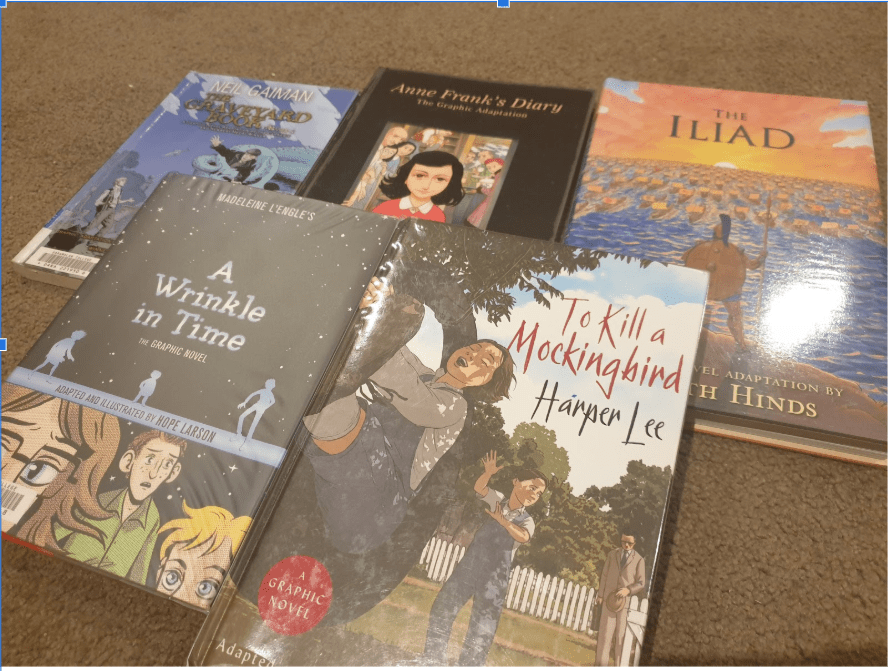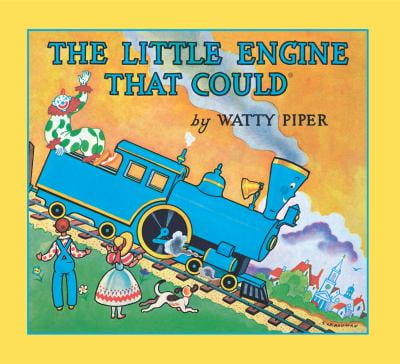I fell in love for the first time with a boy named James Winthrop Frayne II. I was 11 years old and madly in love. He was 16 years old, tall and very smart, with red hair, green eyes and a slightly crooked smile.
Unfortunately for me, James or Jim, as I lovingly referred to him, was a character in my favourite book series “Trixie Belden”. In fact, my love for Jim Frayne was so embedded into my mind that I ended up marrying another lovely redhead (he says honey-blond) who also happened to have James in his name. And whilst I was falling in love with Jim Frayne…
I fell in love with reading books.
Now when I say I love books, I say this as an adult who reads on a daily basis.
I have never spent a day in my life as far as I can remember without reading or food. In fact reading and eating are interwoven rather closely in my life. I have eaten my way through many books and I have read my way through many meals. Even now as a mother of three, dinner table conversations are still second place to a book. So for me, books are a need, like food and water. I indulge that need with classics and new authors; old favourites and popular series. But series fiction holds a dear spot in my heart. As a child, series fiction gave me Jim and Trixie, Harry and Hermoine, Frank and Joe, Nancy and Bess, Laura Ingalls, Anne Shirley, Lucy, Pollyanna, Heidi, George and Timmy, Darryl and Sally. As an adult series fiction brought me Doc Scarpetta, Tempe Brennan, Ayla of no people, Falco, Jamie and Claire plus many others into my life. Whilst I have loved the classics and other stand alone titles, series fiction brought me the greatest joy.
{silence} {crickets} {crashing cups of tea and chairs} {my career as a future TL fading into the sunset}
Yes, as an adult who is also a fledgling teacher librarian, I am voicing out loud my deep and ardent affection for serial stories. Now, once everyone has picked themselves off the floor and righted their tea cups; I will explain my thoughts.
I acknowledge that series fiction, whether for adults or children, has often been regarded as literary rubbish. Often viewed as the ‘Mills & Boon’ of literature, series fiction is derided for its repetitive structure, predictive plot and lack of character development (Westfahl, 2018). Some would even argue that its presence on bookshelves is a betrayal of literary values (Westfahl, 2018). But these people are snobs! Books do not always have to be among the lexicons of literature. Books, especially fiction books, should be able to satisfy cognitive, emotional and the developmental needs of the reader and series fiction definitely addresses the emotional needs of both fledging and proficient readers.
But before I elaborate deeply on how series fiction changed my life; I would like to clarify a few technical issues. There are three main types of series fiction. Firstly, there is the progressive series; where a longer narrative is broken down into shorter novels and the sequence of titles is important to the reader and storyline (Wooldridge, 2015). Then there are the successive series, where the plot repeats itself continuously and lastly, the accidental variety where the author reluctantly writes prequels and sequels to comfort the crazies.
Rowling’s Harry Potter, Marsden’s Tomorrow when the war began, Montgomery’s Anne of Green Gables and Wilder’s Little house books are some examples of progressive series. These book concatenations had a definite end which saw the characters grow and develop along with the reader. I was one of those readers that grew up with Ellie and Harry. I devoured John Marsden’s series in a matter of months. My poor high school teacher librarian was continuously pestered to get the rest of the series once I got hold of the first one. Poor man! Lucky for him, by the time I discovered Harry, I had a job and a library membership! I was 13 when the first HP book was released and as Harry grew up, so did I. Harry, Hermoine and Ron were more than just book characters, for me they were friends.
Successive series examples include the famous Diary of a wimpy kid, Nancy Drew, Hardy Boys, Trixie Belden, Babysitters club, Animorphs, Famous Five, Secret Seven, and Bobbsey Twins. These series have a foreseeable story patterns with comforting characters and obvious plots (Wooldridge, 2015). Whilst these books may seem formulaic (they are!), it is their predictability that makes them popular. Series fiction offers children constancy and security in a world full of upheaval (Wooldridge, 2015). Children develop a sense of trust, an affection with the character and possibly even a relationship with the author (Wooldridge, 2015). So while they themselves grow up through the tumultuous years of puberty, series fiction with its predictability offers an escape, a playdate with an old friend.
I developed this type of relationship with Enid Blyton after being introduced to the Famous Five. The sheer joy received from reading that series led me to trust her writing style and with it I discovered Secret Seven, 5 find outers and it, Mallory Towers, Twins at St Claire’s, Wishing Chair, Enchanted Tree, Amelia Jane and so many more. For an awkward immigrant kid with poor social skills, these books allowed me to escape to places where magic and friendship abounded. My daughter is also a big Blyton fan. Every time she picks up a book authored by Blyton, I know that she will most likely gain the same level of emotional satisfaction that I did and so develop her love of reading. There is also a great deal of enjoyment to share with her the books of my childhood.
The last main type of series fiction is the accidental variety. These are books that the author only planned on one, and then somehow their popularity has meant sequels and prequels were soon requested by adoring fans. George M Martin’s Game of Thrones is such a series, spawning an TV run that lasted several years and ended before the last book has even been published. Diana Gabaldan’s Outlander series is currently stalled at the near publication of its 9th book and only time will tell if the tenth book will ever eventuate (especially since the first book was published almost 20 years ago!). Other accidental series include Baum’s Wizard of Oz, Norton’s The Borrowers and P. L. Traver’s Mary Poppins. Because these series were accidental and not planned, their storylines do not always make sense and can appear a bit jerky at times. Sometimes they abruptly end if the author or readers lose interest.
Series fiction has been around for a long time. As much as some literary snobs would hate to admit, there are some current classics that used to be serials. Dicken’s Pickwick Papers and another seven of his other titles as well as Doyle’s Sherlock Holmes started off as series but then were condensed into a novel several reprints later (McGill-Franzen & Ward, 2018). Even further back to the folklore stories such as mythical twelve tasks of Hercules; the thousand and one stories of Scherazade and adventures of the Round table are varieties of series fiction. So to all those literary snobs that believe series fiction are rubbish… well… pffft to you.
If you think about it from a practical viewpoint it makes sense if you have a recipe that works to use it! Edward Strathmeyer had such a recipe back in the boom days of series fiction. He planned outlines of books and then organised cheap ghost writers to write the stories, and oh boy… did it work! The whole Trixie Belden, Nancy Drew and Hardy Boys production is based upon this magical recipe (Westfahl, 2018). The recipe had some key ingredients. Characters are kept the same age; have the same small town holistic upbringing; go on amazing adventures, travel the world but always come home safely to a loving family. These books allowed children and teens (mainly aimed at Caucausian middle class Americans) an avenue of escape from their groundhog day lives. As these book characters all suffered from perennial Peter Pan syndrome, they have never lost their appeal even in its trillionth reprint nearly ninety years after the first copy (Finnian, 2013). I will mention here that whilst racial demographics and family structure has evolved significantly since the first Stratemeyer book was published in 1927, their popularity has not changed. The plot pattern remains the same but the settings and dilemmas have evolved with the times. Obviously the recipe still works!
So what is the benefit of series fiction? Besides emotional satisfaction, series fiction allows the reader to build their literacy skills. McGill-Franzen & Ward (2018) believes that the predictable plots assist in developing word recognition which in turn boosts vocabulary and reading confidence. The formulaic story pattern allows the reader to easily identify any explicit reading conventions present. This expanded vocabulary and confidence then allows the reader to successfully use their increased literacy skills in other areas.
Series fiction makes it simple for readers to identify titles they are willing to read because they identify with the author. Reluctant readers are more likely to pick a book they are familiar with by the same author; than a title by a new author. They are also more likely to try other titles by that author because of the relationship that was previously established. A great example is John Flanagan, author of the fabulous Ranger’s apprentice series. Teens who enjoy that series often move onto the Royal Ranger series as well as Brotherband because they trust the author. The same can be said for Rick Riordan and the plethora of books he has published.
The impact of series fiction is clear. Children and teens who read more books end up being more adults who read. Remember, committed adult readers were hooked onto reading as children by series fiction (McGill-Franzen & Ward, 2018). And whilst reading of insightful novels that provokes critical thinking complements a wide reading program, it cannot replace it. Pushing the classics onto children and teens before they are ready is unlikely to work. But offering them an opportunity to connect with an author or a series they can engage with may put them onto the pathway towards literature. After all, children do age out of one series and into another (McGill-Franzen & Ward, 2018). They grow from Blyton’s Magic Faraway tree to Rodda’s Rowan of Rin, to Rowling’s Harry Potter to Marsden’s Tomorrow when the war began to Davis’ Falco, Cornwall’s Scarpetta and Reichs’ Bones and Hume’s Arthur and Merlin series and eventually they reach the classics. Why do I know that? Cos I did just that.
I fell in love with reading as a child. I have stayed in love with reading as an adult. Are you in love with reading? If so, when did it happen?
REFERENCES
Finnan, Robert (2013). “Unofficial Nancy Drew Home Page”. Retrieved 14th March 2020.
McGill-Franzen, A. & Ward, N. (2018). To develop proficiency and engagement, give series books to novice readers. In D. Wooten, B. Cullinan, L. Liang & R. Allington (Eds). Children’s literature in the reading program: Engaging young readers in the 21st century, (5th ed., pp. 153-168). Retrieved from Proquest Ebook Central.
Westfahl, G. (1999-2018). Series fiction. World of Westfahl. Retrieved from https://www.sfsite.com/gary/ww-ref-series01.htm
Woolridge, T. (2015). Series fiction and Sallly Rippin’s Billie B Brown series: The ‘Most important continuous reading children do on their own’. mETAphor, 3, 30-35. Retrieved from https://www.englishteacher.com.au/
 References:
References: 





